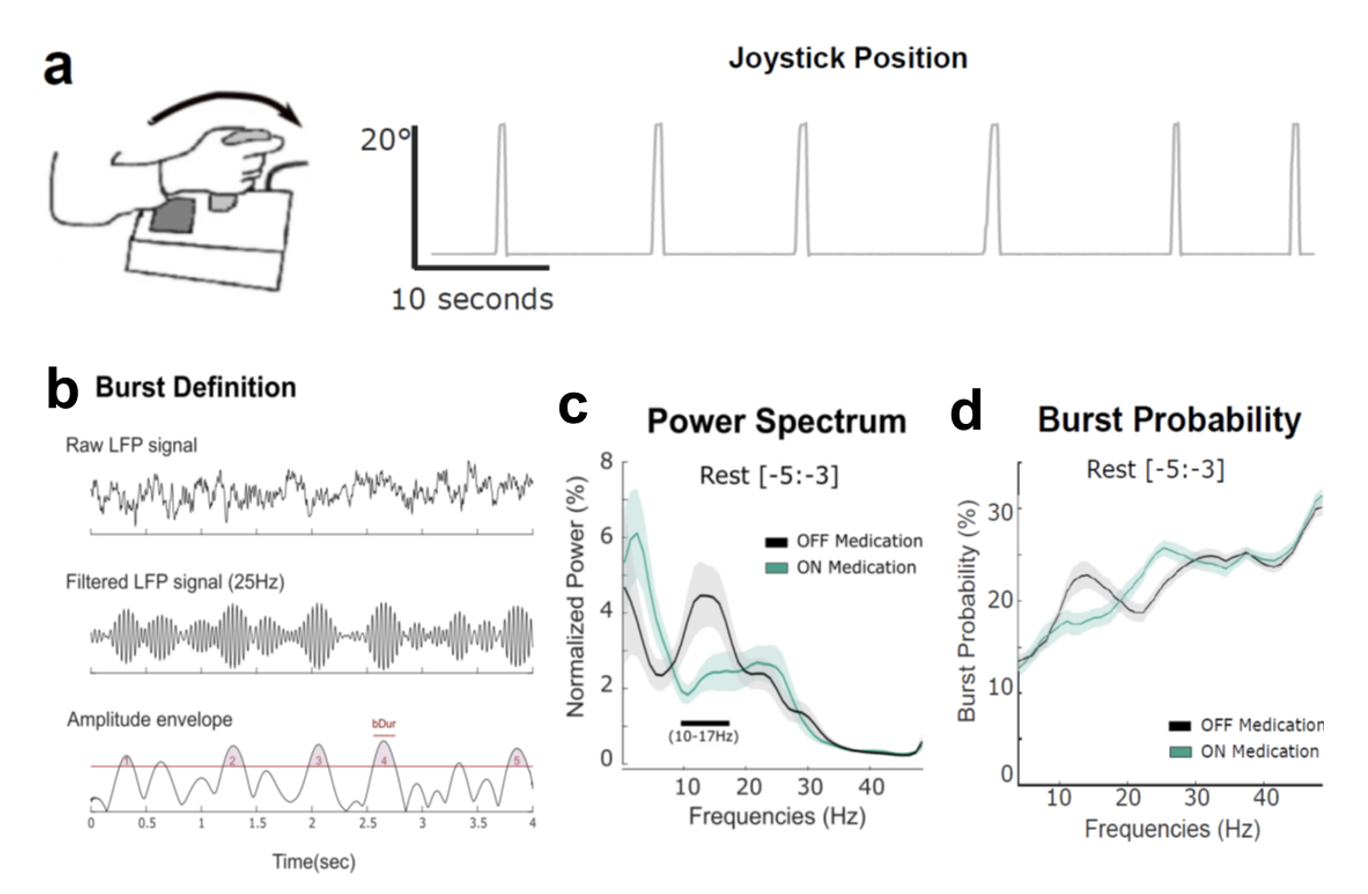Average power and burst analysis revealed complementary information on drug-related changes of motor performance in Parkinson's disease.
Brain activity in the form of brain waves has been analysed so far by either calculating the average intensity in time, or by measuring characteristics of bursts (short bouts of brain activity). Here, we compared the two methods and show that they can offer complementary information on how activities in deep brain nuclei are modulated by movements, and how the modulation is affected by Parkinson’s and dopaminergic medication.
In patients with Parkinson's disease (PD), suppression of beta and increase in gamma oscillations in the subthalamic nucleus (STN) have been associated with both levodopa treatment and motor functions. Recent results suggest that modulation of the temporal dynamics of theses oscillations (bursting activity) might contain more information about pathological states and behaviour than their average power. Here we directly compared the information provided by power and burst analyses about the drug-related changes in STN activities and their impact on motor performance within PD patients. STN local field potential (LFP) signals were recorded from externalized patients performing self-paced movements ON and OFF levodopa. When normalised across medication states, both power and burst analyses showed an increase in low-beta oscillations in the dopamine-depleted state during rest. When normalised within-medication state, both analyses revealed that levodopa increased movement-related modulation in the alpha and low-gamma bands, with higher gamma activity around movement predicting faster reaches. Finally, burst analyses helped to reveal opposite drug-related changes in low- and high-beta frequency bands, and identified additional within-patient relationships between high-beta bursting and movement performance. Our findings suggest that although power and burst analyses share a lot in common they also provide complementary information on how STN-LFP activity is associated with motor performance, and how levodopa treatment may modify these relationships in a way that helps explain drug-related changes in motor performance. Different ways of normalisation in the power analysis can reveal different information. Similarly, the burst analysis is sensitive to how the threshold is defined - either for separate medication conditions separately, or across pooled conditions. In addition, the burst interpretation has far-reaching implications about the nature of neural oscillations - whether the oscillations happen as isolated burst-events or are they sustained phenomena with dynamic amplitude variations? This can be different for different frequency bands, and different for different medication states even for the same frequency band.

2023. NPJ Parkinsons Dis, 9(1):93.
2020. J. Neurosci., 40(7):1571-1580.
2023. Brain, 146(12):5015-5030.